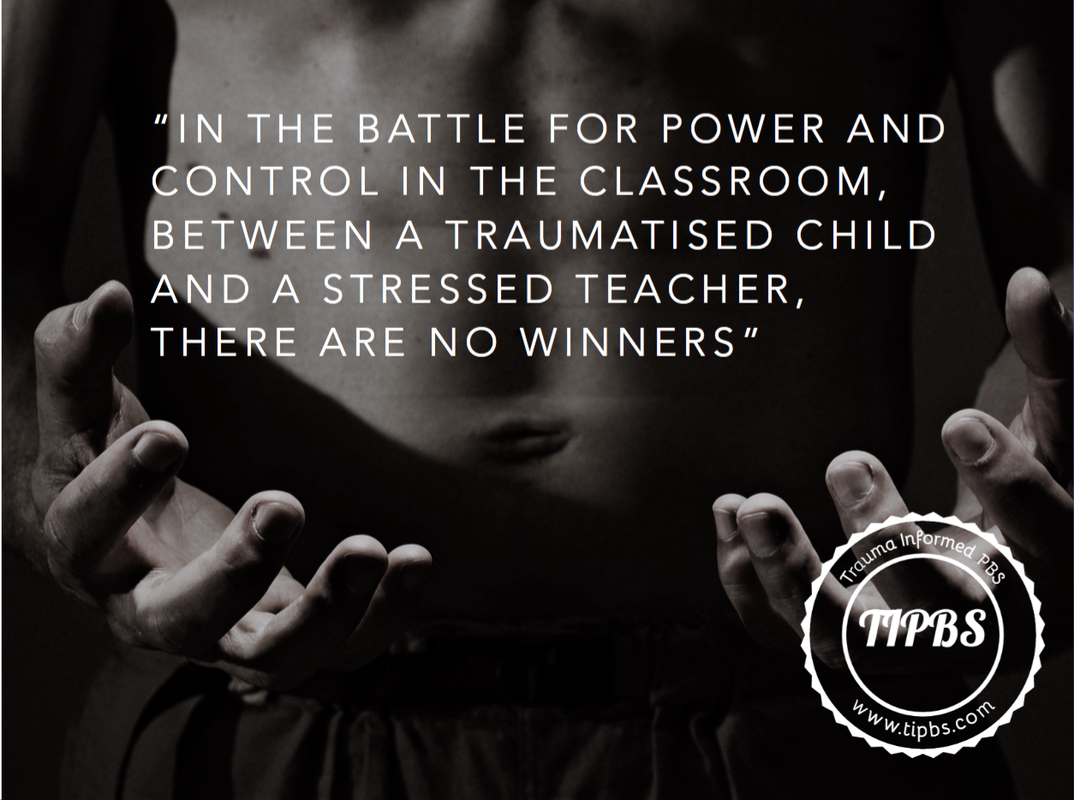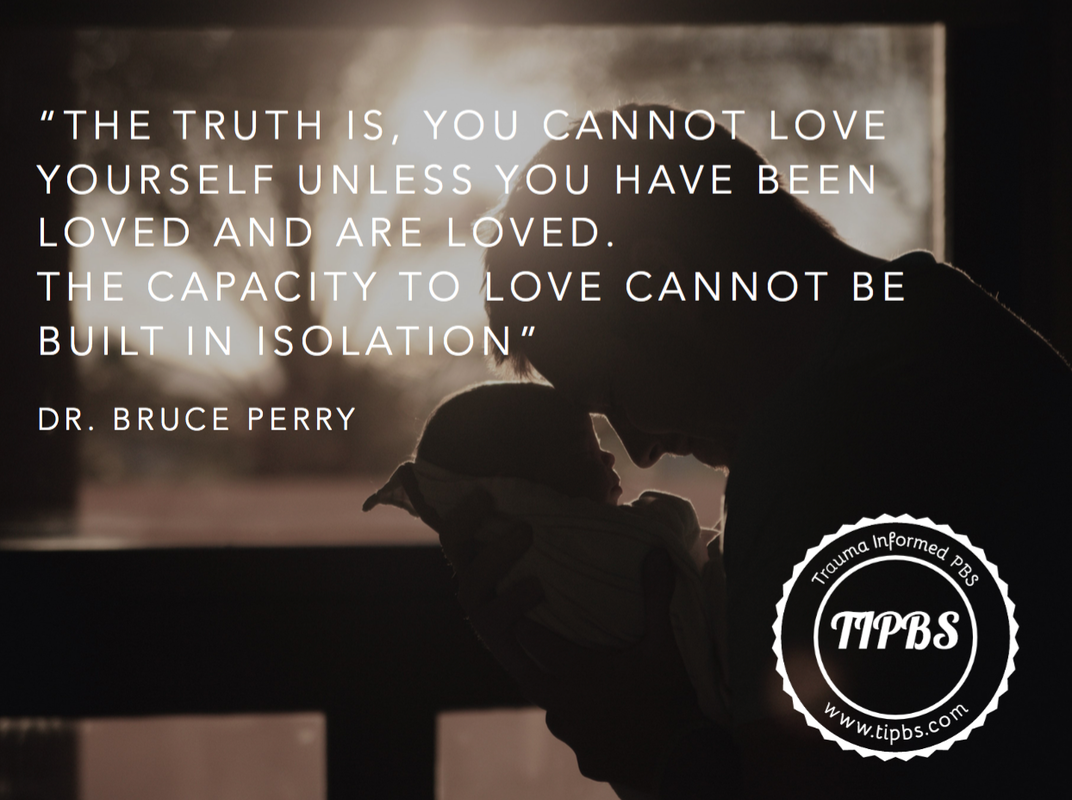|
Educator Insights breakdown theory and research to give teacher practical advice and strategies. In his book, The Body Keeps Score, Dr. Van Der Kolk, one of the leading researchers in the area of psychological trauma, uses recent scientific advances to show how trauma literally reshapes both body and brain. Click on the picture below to check the book out on Amazon.com. Keep reading for a summary of chapter 6 of the book.

Sensory based classroom strategies have become incredibly popular over last few years - and with good reason. In this chapter, Dr. Van Der Kolk discussed the science behind sensory processing, its influence on our self-regulation and emotional states and finally, how people’s perceptions of their senses gets distorted in the aftermath of traumatic events.
Dr. Van Der Kolk starts by introducing us to the concept of ‘introception’ - defined as “our awareness of our subtle sensory , body-based feelings” Having control and agency in life starts by feeling in charge of your body and an awareness and accurate perception of our senses - touch (somatosensation), sound (audition), sight (vision), taste (gustation), smell (olfaction), our sense of spatial orientation (vestibular) and sense of movement (proprioception). “The greater that awareness, the greater our potential to control our lives” How do traumatised people perceive sensory information? “Traumatised people chronically feel unsafe inside their bodies. The past is alive in the form of gnawing interior discomfort. Their bodies constantly bombarded by visceral warning signs, and, in an attempt to control those processes, they often become expert at ignoring their gut feelings and in numbing awareness of what is played out inside...the more people try to push away and ignore internal warning signs, the more likely they are to take over and leave them bewildered, confused and ashamed. People who cannot comfortably notice what is going on inside become vulnerable to respond to any sensory shift either by shutting down or by going into a panic - they develop a fear of fear itself” Educator Insights: The need to feel in control underlies our fundamental human need to feel safe. But what if you can’t control how your body reacts to the world around you? What if you found yourself getting scared at the sight of a small puppy? What if you found yourself feeling rageful looking at a little baby? Although such reactions may sound bizarre and weird to some, I have witnessed traumatised children react strongly to fairly innocuous events, people and objects - all potential triggers for terrifying and unresolved events from their past. For several of these children, such fight-flight-freeze reactions are quick, and visceral. They feel it too quickly to be able to stop and fully make sense of what their bodies are communicating to them or why they might be feeling this way. So what do you do when you can’t control your own body or make sense of your sensory reactions? When children feel unable to control their body and reactions to the environment around them, they begin to seek excessive control over the environment itself. For several traumatised children, this drive for control occurs as a pre-conscious reaction (i.e. they are consciously unaware of the reasons for such a drive) to their stress-related sensory and somatic reactions. When chronically stressed, and not sufficiently soothed or protected by the adults around them, traumatised children come to learn that seeking coercive control of those around them is the only way to feel safe - through oppositional behaviour, intimidation, threats of violence or sometimes even demands for affection from adults. “Because traumatised people often have trouble sensing what is going on in their bodies, they lack a nuanced response to frustration. They either react to stress by becoming “spaced out” or with excessive anger. Whatever their response, they often can’t tell what is upsetting them. This failure to be in touch with their bodies contributes to their well-documented lack of self-protection and high rates of revictimization; and also their remarkable difficulties feeling pleasure, sensuality, and having a sense of meaning” Educator Insights: Almost all the critical incidences I have been involved in at schools has involved a traumatised student becoming disproportionately upset and angry with what might seem to others to be minor stressors. Teachers describe feeling like they need to walk on egg-shells around these students. It is inevitable to find teachers in these situations being stuck in ‘coercive cycles of interactions’ with disruptive students. Dr. Gerald Peterson and his colleagues at the University of Oregon first coined the term ‘coercive cycle’. For over 30 years, they observed parents and teachers become stuck in cycles of interaction that seemed to worsen the behavioural difficulties of the child, and interfered with learning social skills. These cycles were power battles between children using coercive and oppositional behaviour to get what they want, and adults trying to use increasing levels of punishment which led to the child learning that quick, heightened expressions of dissent and anger would get them what they want, and the adults around them learnt that harsh punishment was the best option for quick and timely obedience from children. In classrooms, this often looks like a student that goes from 0 to 100 in no time, and a teacher who cannot stay calm and quickly resorts to the most severe punishment permissible - asking the child to leave the class. For students with trauma, this cycle is further reinforced by their somatic reactions. Their traumatic stress response to an angry and rejecting teacher, perpetuates the child’s perception of danger - fuelling a more intense emotional and behavioural reaction that is driven to seek control over an increasingly frightening event. Put simply, in the battle for power and control in the classroom, between a traumatised child and a stressed teacher, there are no winners. Although the battle for the day may have seen a victor in the student - with a teacher backing off - or the teacher - with a student becoming submissive - the war is often far from over - with bad habits being reinforced for both the student, and the teacher. Click here to read more about Patterson’s Coercive Cycles of Interaction.
One powerful strategy to break this cycle is to strengthen the ‘introception’ of traumatised students through building their emotional literacy. Emotional literacy (often referred to as emotional intelligence) is our ability to recognise, understand and appropriately express our emotions. It is also the ability to recognise the emotions of others and to respond to them appropriately. Emotional literacy is a key component of both self-awareness and social awareness. Emotionally literate children can:
Check out the website for the Center for Academic, Social and Emotional Learning (CASEL) for ideas and lessons plans around emotional and social literacy. Remember, lessons of emotional literacy are hard for traumatised children to learn. For some, it can be frightening to pay attention to their body - particularly for those who have been physically violated through sexual or physical abuse. The teaching of these skills requires thoughtful lesson planning around not triggering these students, introducing these ideas in a engaging, non-threatening manner and a plan to monitor the ongoing emotional reactions of the during the lesson. I have found it invaluable to consult with a mental health professional about the risks and opportunities of engaging traumatised students in learning such skills in school. When done thoughtfully, the teaching of such emotional literacy skills are invaluable in helping traumatised children feeling safe and in control of their bodies - and in turn, the world and people around them. “The most natural way for human beings to calm themselves when they are upset is by clinging to another person. This means that patients who have been physically or sexually violated face a dilemma: They desperately crave touch while simultaneously being terrified of body contact. The mind needs to be re-educated to feel sensations, and the body needs to be helped tolerate and enjoy the comforts of touch. Individuals who lack emotional awareness can be helped to slowly reconnect with themselves” Educator Insights: Touch is a fundamentally core aspect of being cared for. We understand this through biological science and research, as well as our own personal experience. The issue of touch can be a sensitive one - in the area of education and child trauma. Traumatised children, in the care of protective services, are often rarely touched. Messages of caution about retraumatising such children by touching them has made an entire community of people caring for them risk-aversive and paralysed of being perceived as ‘unprofessional’ or worse, being falsely accused of abusing these children. The use of touch with students in the school environment, particularly with traumatised students, must be done with great thought and planning. Grabbing a child when they are heightened and upset, or not appropriately redirecting a child who touches you inappropriately, can be damaging to a traumatised child. But equally damaging is our complete avoidance of any touch, or lack of any deliberate planning about ways to appropriately make contact with the student. Your school or school district’s policies around appropriate physical contact are often a good place to start when thinking about this issue. It’s important to remember that each student carries different vulnerabilities and these must factor into any plans that are made for physical contact. Check out this great article by The Atlantic on this issue: ‘Should teachers be allowed to touch students?’ The experience of being cared for by a safe and protective adult, teaches children that they are lovable and worthy of support and help. As educators, we would be remiss to not teach students this lesson. To quote Dr. Bruce Perry - “The truth is, you cannot love yourself unless you have been loved and are loved. The capacity to love cannot be built in isolation” To learn about the Trauma Informed Positive Behaviour Support (TIPBS), visit www.tipbs.com/contact and register your interest in our online course. The first 100 sign-ups can do the course for free.
0 Comments
Leave a Reply. |
Archives
February 2019
|




 RSS Feed
RSS Feed